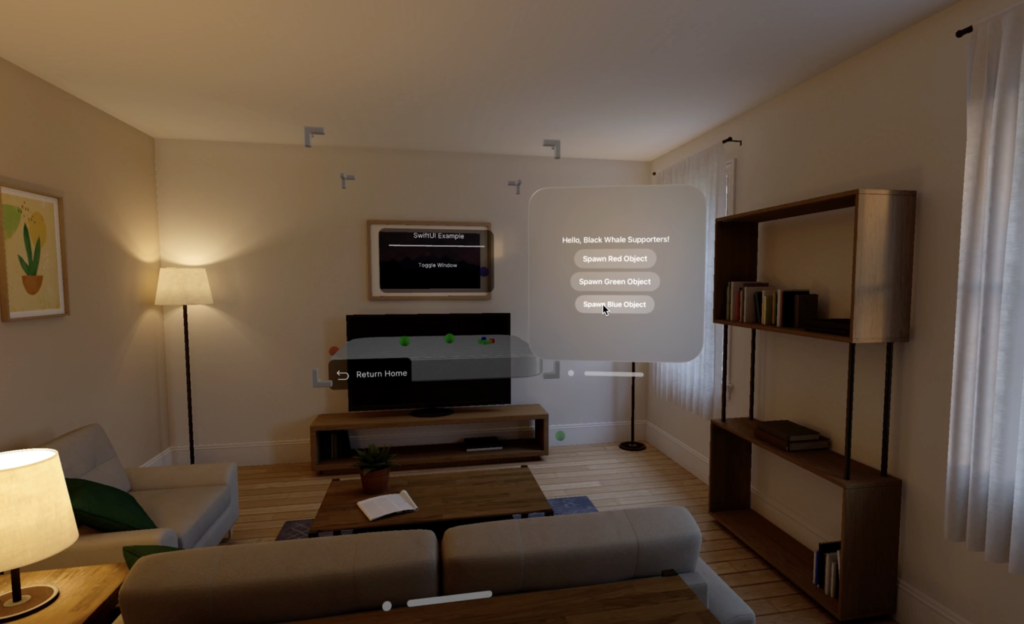Hello XR Developers! Today, we’re diving into the latest PolySpatial update for Vision Pro, focusing on integrating SwiftUI windows for interactive Unity scenes. This breakthrough allows us to blend native SwiftUI elements with Unity, offering seamless control over mixed reality applications.
🌟 Setting the Stage
To kick things off, ensure your toolkit is up to date:
- Unity version 2022.3.18 or later for Apple Silicon support
- Xcode 15.2 beta or later
- VisionOS Unity module and visionOS Xcode simulator installed
Unity’s recommendation leans towards the Universal Render Pipeline (URP) for its compatibility with features like Foveated Rendering and Stereo Render Targets when developing for visionOS.
🛠️ Configuring Your Project
Switch your project platform to visionOS, ensuring you’re targeting the correct SDK for your development environment—Device SDK for hardware testing or Simulator SDK for virtual testing.
🎮 Mixed Reality Setup
For mixed reality applications, select “Mixed Reality – Volume or Immersive Space” in the Apple visionOS menu under XR Plug-in Management. Unity will prompt you to install necessary PolySpatial packages, setting the stage for your mixed reality app.

🖥️ Creating SwiftUI Windows
After setting up your project, dive into the PolySpatial package to import samples and Play to Device files. This setup allows for efficient testing directly on the Apple Vision Pro device or the visionOS simulator.
🕹️ Testing and Interaction
Utilize the “Play to Device” feature for an immediate preview of your content in the simulator or on the actual device. Remember, the Unity Editor’s rendering system is used during simulation, which may not fully represent the performance characteristics of visionOS.
📲 Swift-UI Integration
The Spatial UI Input Manager component is crucial for registering interactions, such as pinches, to trigger SwiftUI windows. Unity’s new input system facilitates 3D touch events, simplifying the creation of interactive objects for visionOS.
🔄 Bi-Directional Communication
The Swift UI-Driver script bridges Unity and Swift, allowing for dynamic UI element control within your PolySpatial scene. This script manages the opening and closing of SwiftUI windows and handles callbacks from Swift, enabling Unity to spawn objects based on Swift interactions.
🛠️ Customizing SwiftUI Views
Dive into the Swift side to customize your SwiftUI scene. Modify the “Hello World Content View” to include buttons that interact with Unity, showcasing the power of real-time control over the Unity environment from Swift.
🎉 Bringing It All Together
With these steps, you can create native SwiftUI windows that interact seamlessly with your Unity scene, enriching the mixed reality experience on Vision Pro. This integration opens up new possibilities for XR development, blending the strengths of Unity and Swift to create immersive and interactive applications.
Conclusion: A New Era of XR Development
The integration of SwiftUI with Unity for Vision Pro marks a significant advancement in XR development. By leveraging the PolySpatial update, developers can now create more intuitive and engaging mixed reality experiences, bridging the gap between native app development and immersive content creation. Dive into this new realm of possibilities and elevate your XR projects to new heights.
Support Black Whale🐋
Thank you for following this article. Stay tuned for more in-depth and insightful content in the realm of XR development! 🌐
Did this article help you out? Consider supporting me on Patreon, where you can find all the source code, or simply subscribe to my YouTube channel!